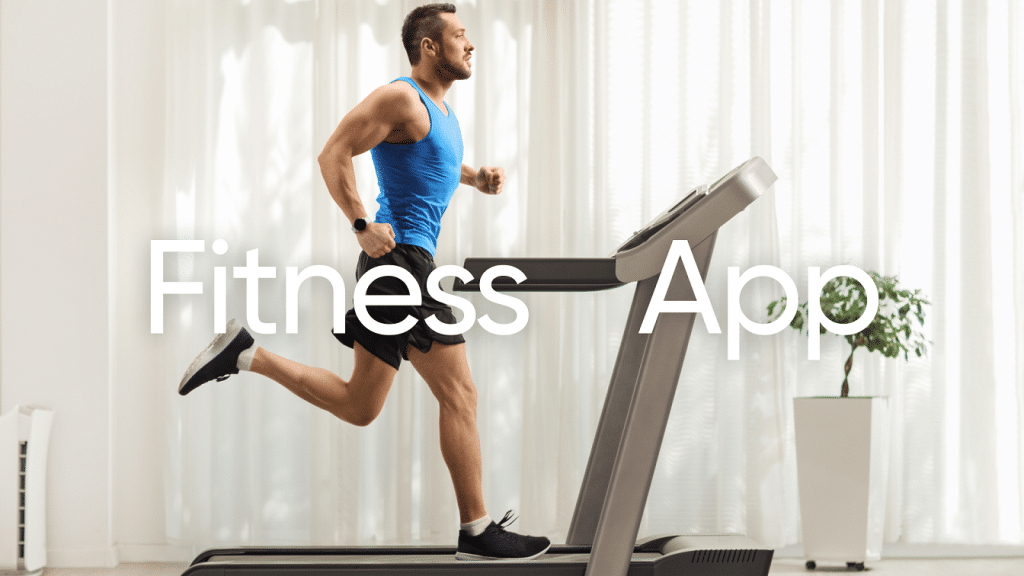Have you seen those people who run religiously every day? Are you one of them? Running can be a fun, physical activity that some people cannot seem to get enough of. Unknowingly other people run while playing, catching the bus when late for work, escaping danger, or one of the other fast-paced challenges that life throws at them. This article focuses on purposeful running, particularly the running 2 miles a day transformation.
Did you know that there is more to running than just being fit? According to Science Direct, running has been termed as an essential lifestyle medicine for long life (12). People often overlook the changes that may come with running because they have made it a habit, while others think that it is just not worth it. Running two miles a day, in particular, may sound crazy if you have never tried it before. By the end of this article you will see why it is a worthwhile activity and that you should embrace it for better health and for aesthetic purposes, among other benefits.
Benefits Of Running: Running 2 Miles A Day Transformation Of Mind And Body
Why is running good for you? This activity is associated with various transformations of the human body and mind (1). The human body (hips, feet, length of legs, ability to sweat, shock-absorbing spinal discs etc) is the way it is because people evolved to be effective endurance runners (6). Running everyday results in:
-
Physical Transformations
Seeing is believing, and physical changes confirm that running is effective. These transformations enable people to measure their running performance and track the progress. These include:
-
Weight Loss
Spot-reduction is a myth; therefore, you need to combine healthy dieting with physical activities that involve the whole body to lose weight. Running offers an impressive calorie burn. Note that other factors such as your body composition, weight, gender, diet, and level of physical activity also determine how much weight you could lose. For example, according to an article on Harvard Health Publishing, running 2 miles a day at 5 mph may help someone weighing 125 pounds burn about 160 calories (3).
If you are running to burn more calories and to lose weight, you cannot just keep eating whatever you want because that would keep you from attaining your goal. Eat a good, balanced weight loss diet to keep your muscles healthy, as you shed unwanted pounds.
Read More: Running For Weight Loss Interval Training: Get Yourself Up ‘N Moving!
-
Stronger Heart
The heart is a muscular organ and like all muscles, pushing it to work harder increases its strength (8). Stanford Health Care describes an athlete’s heart as a term that refers to the normal changes in the hearts of people who engage in intense athletic training (2). These subtle changes include a small increase in the size of the ventricle (pumping chamber) and atrium (filling chamber), small proportionate increases in the thickness of the heart muscle, and slight increases in the width of the main blood vessel from the heart (2). This is a positive, natural process that occurs to make the heart more efficient at pumping blood to other organs as you workout (2).
A two-mile run may not be sufficient to develop the athlete’s heart. However, combining an intense training program plus lots of running may help you develop a bigger, healthier, and more efficient heart. One study in the Sports Medicine (Auckland, N.Z) journal concluded that after running 5.6 to 12.3 miles per week for a year, healthy, inactive individuals notably reduced their overall body mass and body fat, and resting heart rates and triglyceride levels went down (11). Also, the participants’ maximal oxygen uptake and “good” cholesterol levels increased (11).
Heart-Related Benefits Of Running
Other heart-related benefits of running a few times a week, according to Bronson Health publication include (7):
- Lowering blood pressure: If you run for 30 minutes several times in a week, the low-density lipoprotein (LDL), which is the “bad” type of cholesterol, will be lowered, and the high-density lipoprotein (HDL),“good” type of cholesterol,” will increase. Constant physical activity normalizes high blood pressure.
- Minimizing the risks of heart diseases. According to expert opinion on Bronson, running reduces the risk of heart diseases by 35%- 55% (7).
- Preventing clots in blood vessels and arteries. This supports healthy blood flow, blood pressure, and cholesterol.
- Minimizing the heart’s workload. This happens because running leads to stronger hearts, therefore lower resting pulse rate and increased oxygen intake, enabling the heart to pump a larger amount of blood per beat, making its job easy.
- Maintaining healthy weight. Being overweight or obese increases the risk of cardiovascular disease; therefore, by helping them shed extra fat, running contributes to a healthy heart.
-
Stronger Leg Muscles And Improved Knee Health
Other than physically demanding activities, more straightforward exercises like jogging and running exercises strengthen muscles, provided that they are executed in the right manner. An independent study published in the National Institute of Arthritis and Musculoskeletal and Skin Diseases Journal established that running regularly minimized athletes’ likelihood of suffering from knee pain or osteoarthritis (10). This is because running helps people maintain a healthy BMI and strengthen their leg muscles and bones.
Running 2 Miles A Day Transformation: What Muscles Does Running Work?
Unlike other exercises that target specific muscle groups, running targets a wide range of muscles in the entire body (from the shoulders to the toes). In particular, it works the lower body muscles, with the hamstrings, glutes, calves, hip flexors, feet, and quads being the biggest beneficiaries (13). Other core muscles, for example, obliques and rectus abdominis, benefit too. Running does not work on your muscles alone. To achieve better results, you have to add more challenging exercises such as resistance training, weight lifting, and HIIT.
Running 2 Miles A Day Transformation: Mental And Emotional Transformation
Running has changed how people perceive life by improving their state of mind and emotional wellness. After getting used to a running habit, your body extends the transformation to other aspects of life, including personal and social well-being. These include:
-
Better Sleep
A 2012 research published in the Journal Of Adolescent Health was conducted on 51 teenagers aged 18 years on average, established that people who run for at least 30 minutes, five days a week, for three weeks enjoyed better sleep than those who do not engage in physical exercise (5). Objective sleep and subjective sleep quality, mood, and daytime concentration were enhanced in the running group (5). This confirms that engaging in physical activity positively impacts your sleep patterns; therefore, if you have sleepless nights for whatever reasons, you had better incorporate running into your schedule and see how it affects your sleep. If you cannot run 2 miles a day, run for at least 5-10 minutes every day.
-
Reduced Stress And Better Mood
In a fast-paced world, people are bundled up with stress and cannot find a way to deal with it. Even with the visit to the psychologist, running, like other physical activities, may greatly contribute to your recovery. The pace for running two miles a day does not matter; just keep at it because it encourages your body to produce endorphins, making you feel good about yourself and your environment, helping the brain cope with anxiety, depression (4).
When it comes to weight loss, progress is made by inches, not miles, so it’s much harder to track and a lot easier to give up. BetterMe app is your personal trainer, nutritionist and support system all in one. Start using our app to stay on track and hold yourself accountable!
-
Prolonged Life
A fascinating fact about running is that it is one of the secrets to living a longer life. Studies show that runners have a 25%–40% reduced risk of premature mortality compared with non-runners (12). It has been established that those who have made running part and parcel of their lives, live approximately 3 years longer than non-runners (12). Isn’t that motivation enough?
-
Psychological And Emotional Victory
Dedicating your time to regular physical exercise grants you a sense of victory and accomplishment. For instance, completing a successful two-mile running streak leaves you aiming for higher. Such zeal for even greater achievements makes you get out more often and get a chance to meet fellow runners, make new friends, and improve your social skills.
-
Better Time Management
When running 2 miles a day becomes a habit, it improves your time management, drive, and purpose. You may start by incorporating some spare running time into your schedule and sticking to it. For example, if you love jogging in the morning but at the same time have important stuff to do, you may juggle the daily activities to find a spot for your running exercise. The ability to plan the week ahead counts as an improvement to your time management skills.
Running 2 Miles A Day Transformation: Disadvantages Of Running
Is running bad for you? Every sport has its quirks and perks, and running is no different. Here are two main challenges that you may face while running and their solutions.
-
Runner’s Face
The Runner’s Face is one of the controversial effects of too much running. Dr Melissa Kanchanapoomi Levin and the founder of Entière Dermatology NYC explain that this theory occurs when a person’s face bounces up and down while running, resulting in claims that running may make a person look older (9).
Although it has been regarded as a mere theory, it is important to take caution. Avoid running too much and listen to your body because trying too hard to reap the quick benefits of running is not good for your health, and your body may not take the pressure well. Things could get even worse if a person has medical issues. If you have underlying health conditions, consult your doctor before signing up for any 2-mile run challenge.
-
Injury
Accidents happen, and injury may occur when you are exercising. According to the insider, 40%-50% of runners are injured each year, so you need to take proper precautions to not fall into this group (13). For example, the rectus femoris quad muscle (crosses the hip joint) often contributes to running injury.
Even if you get injured, you can prevent reinjury by building balance, stability, and flexibility in the muscles involved in running. Embrace proper running techniques and posture, stretch before running to relax tight muscles, or warm up to save yourself the pain, stress, and expenses that come with treating a running injury (13).
Read More: Oblique Stretches To Guard Yourself From Back Injuries
How To Make Running A Habit?
Building a sustainable running habit begins with self-awareness. It involves making little life changes to become a better runner.
- Set goals. Know what you want to achieve by running, understand what you are capable of at the moment, then plan. Setting unrealistic goals may result in a quick burn out that will make you quit.
- Adopt the right strategy. Running 2 miles straight for a beginner is likely to be tough. If you just started running, you need a strategy that will ease you into the habit. One of the most common strategies used by beginners is the run/walk strategy. Run 2-3 minutes straight, then walk 3-4 minutes. As time goes by, your body adapts to the strategy, and from that point, you can work to reduce the time taken to run one mile.
How many miles should I walk a day? Walking and running are complementary to each other during the run/walk strategy. The distance you should walk varies from one person to another depending on their capabilities and purpose for engaging in physical activity.
- Execute the plan. Now that you know what you want to achieve by running and how to get there, it is time to implement the right strategy. Make sure you run at the set time and for the specified number of days every week.
Running does not require expensive equipment as long as you have the proper clothing and shoes. If you are in a neighbourhood with space for running, you do not need a gym membership. If not, you can run 2 miles a day on a treadmill and enjoy similar benefits. At first, it may be difficult to adjust to running, but when the body acclimates, the activity becomes a blissful, meditative, and relaxing experience with the numerous benefits discussed above.
Final Thought
Sitting idly at home is not a choice when you have the opportunity to make significant changes to your life through running. You will enjoy running 2 miles a day transformation of body and mind only if you are well-prepared, dedicated, and disciplined. Although jumpstarting the habit may be difficult for beginners, there are highly qualified fitness experts who will help you progressively get into the routine. If you have any medical condition, seek approval from your doctor before beginning your transformation journey through running.
DISCLAIMER:
This article is intended for general informational purposes only and does not address individual circumstances. It is not a substitute for professional advice or help and should not be relied on to make decisions of any kind. Any action you take upon the information presented in this article is strictly at your own risk and responsibility!
SOURCES:
- 8 key ways running can transform your body and brain (2018, businessinsider.com)
- Athlete’s Heart (n.d, stanfordhealthcare.org)
- Calories burned in 30 minutes for people of three different weights (2004, health.harvard.edu)
- Daily Morning Running for 3 Weeks Improved Sleep and Psychological Functioning in Healthy Adolescents Compared With Controls (2012, jahonline.org)
- Depression and anxiety: Exercise eases symptoms (2017, mayoclinic.org)
- Endurance running and the evolution of Homo (2004, barefootrunning.fas.harvard.edu)
- Five Ways Running Improves Your Heart Health (2016, bronsonhealth.com)
- How Making Your Heart Work Harder Makes it Stronger (2017, health.clevelandclinic.org)
- Is Running Making You Look Older? (2018, huffpost.com)
- Is There an Association Between a History of Running and Symptomatic Knee Osteoarthritis? A Cross‐Sectional Study From the Osteoarthritis Initiative (2016, onlinelibrary.wiley.com)
- Meta-Analyses of the Effects of Habitual Running on Indices of Health in Physically Inactive Adults (2015, pubmed.ncbi.nlm.nih.gov)
- Running as a Key Lifestyle Medicine for Longevity (2017,sciencedirect.com)
- The muscles that running works — and how to protect them from injury (2020, insider.com)
- What Are the Health Benefits of Running 2 Miles a Day? (2019,livestrong.com)













